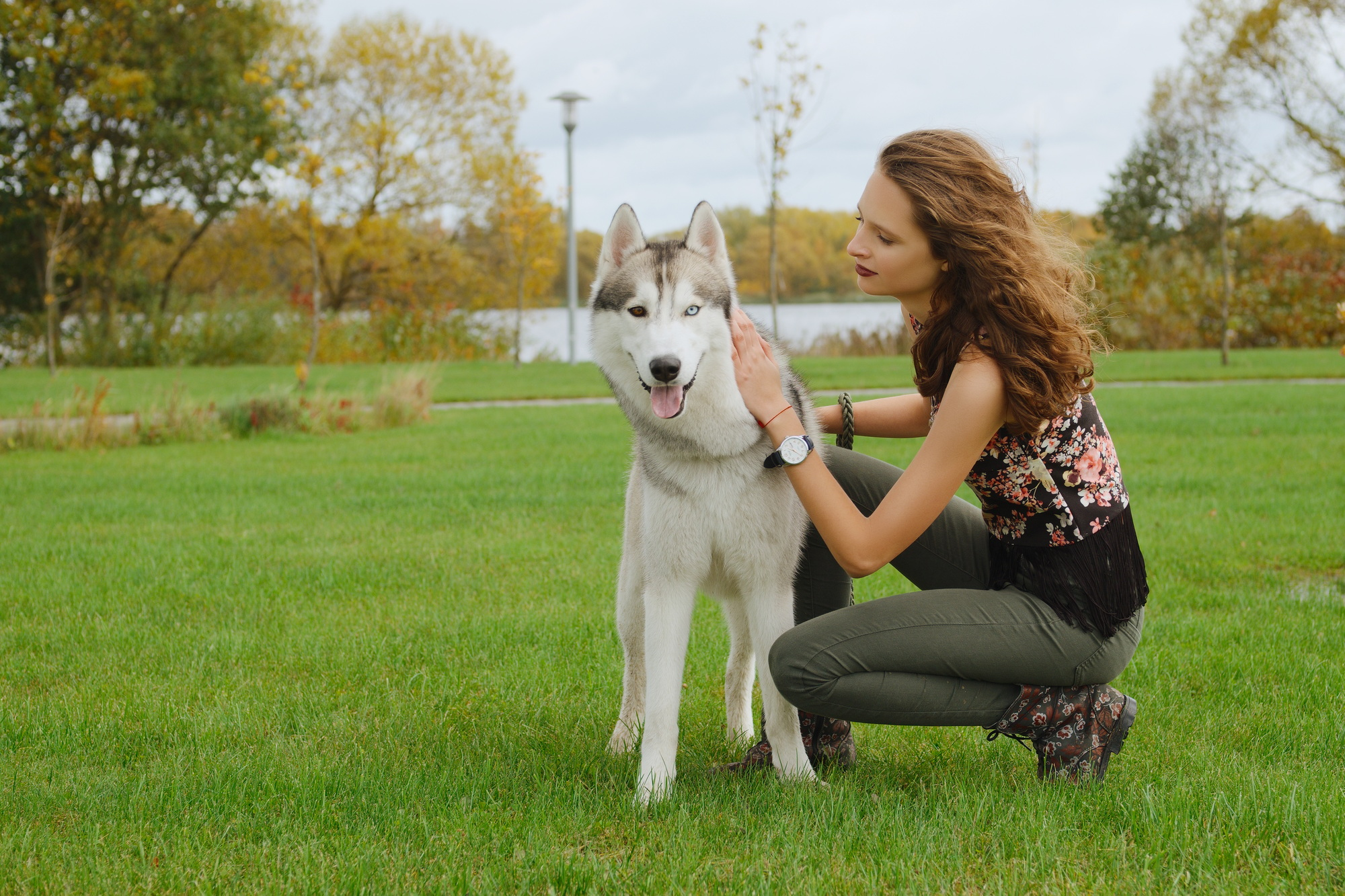Key Takeaways

- Market Research is Crucial: Analyze local dog training services to identify demand, pricing, and opportunities for your business.
- Skill Development: Pursue certifications and education to enhance your dog training skills and credibility.
- Create a Solid Business Plan: Outline goals, target audience, and marketing strategies to guide your business operations effectively.
- Legal Compliance: Register your business, obtain necessary licenses, and secure liability insurance to operate legally and safely.
- Marketing Matters: Utilize both online and local marketing strategies to promote your services and connect with potential clients.
- Client Management: Build strong relationships with clients through effective communication and an organized scheduling system to ensure satisfaction and repeat business.
If you’ve ever dreamed of turning your passion for dogs into a thriving business, starting a dog training venture might be your perfect path. With pet ownership on the rise, more people are seeking expert help to ensure their furry friends are well-behaved and happy. This growing demand presents a fantastic opportunity for you to make a difference in the lives of dogs and their owners.
Launching a dog training business requires more than just love for animals. You’ll need to develop a solid plan, acquire the right skills, and understand the ins and outs of running a business. Whether you’re a seasoned trainer or just starting out, this guide will walk you through the essential steps to establish a successful dog training business that not only fulfills your passion but also meets the needs of your community.
How To Start A Dog Training Business

Starting a dog training business requires an organized approach. Follow these essential steps for effective establishment and operation.
- Research the Market
Research local dog training services and assess demand. Determine pricing structures and services offered by competitors. Identify gaps you can fill.
- Develop Your Skills
Pursue education through dog training courses or certifications. Join professional organizations for additional resources. Hone your techniques through hands-on experience.
- Create a Business Plan
Draft a detailed business plan outlining your goals, target audience, and marketing strategies. Define financial projections and operational logistics.
- Choose a Business Structure
Select a suitable business structure such as sole proprietorship, LLC, or corporation. Register your business in compliance with local laws and regulations.
- Set Up Finances
Open a business bank account. Implement accounting software to track income and expenses. Budget for equipment, marketing, and other operational costs.
- Obtain Insurance
Purchase liability insurance to protect against accidents or injuries. Ensure coverage extends to your training facilities and methods.
- Market Your Services
Utilize social media platforms and local advertising. Build a website showcasing your qualifications and services. Ask satisfied clients for testimonials and referrals.
- Network with Pet Professionals
Establish connections with veterinarians, pet groomers, and shelters. Collaborate for cross-promotional opportunities and expand your client base.
- Offer Various Services
Diversify services by introducing group classes, individual sessions, and specialty training for specific behaviors. Tailor options to meet different dog owner needs.
- Evaluate Your Progress
Regularly assess business performance and customer satisfaction. Collect feedback and make adjustments to enhance offerings and client engagement.
Following these steps positions you to effectively launch a small business in dog training, fostering strong relationships with pets and their owners.
Understanding The Dog Training Industry

Understanding the dog training industry involves examining market dynamics and identifying service types to capitalize on opportunities for a small business.
Overview Of The Market
The global pet training services market anticipates significant growth, projecting a value of $4.9 billion by 2028 with a Compound Annual Growth Rate (CAGR) of 6.2%. North America leads this expansion due to high disposable income, increased pet adoption, and an ongoing trend of pet humanization. Analyzing local market demands reveals strategic insights into gaps in services, which enhances your ability to create a dog training business that meets customer needs effectively.
Types Of Dog Training Services
Understanding various types of dog training services enhances your service offerings:
- Basic Obedience Training: Focuses on essential commands like sit, stay, and come.
- Puppy Training: Addresses behavioral issues and socialization for young dogs.
- Behavioral Modification: Corrects unwanted behaviors such as aggression or fear.
- Agility Training: Provides dogs with physical challenges and exercises for mental stimulation.
- Tracking and Working Dog Training: Targets specific skills for service and working dogs, particularly in rural areas where needs differ.
- Group Classes: Encourages socialization among dogs while reinforcing training concepts.
- Private Lessons: Offers personalized attention for specific owner or dog concerns.
Incorporating these service types into your dog training business caters to diverse customer needs, enhancing your competitive advantage.
Developing A Business Plan

A comprehensive business plan lays the foundation for your dog training business. Focus on specific areas to ensure clarity and direction.
Identifying Your Niche
Identify your niche within the dog training industry. Differentiate between services like basic obedience training, behavior modification, puppy training, working dog training, and service dog training. Specialization attracts a targeted clientele. For instance, emphasizing behavior modification can cater to owners with dogs facing specific challenges. Each niche addresses distinct customer needs, allowing for tailored marketing strategies.
Defining Your Target Audience
Define your target audience clearly. Consider demographics such as location, age, income level, and lifestyle factors of potential clients. For example, targeting busy professionals may require flexible class schedules. Understanding your audience enables effective communication and marketing. Create buyer personas that represent your ideal clients to tailor your services and outreach efforts.
Setting Business Goals
Set specific business goals to track progress and success. Establish measurable objectives, such as acquiring a particular number of clients within the first year or generating a specific revenue target. Aiming for clear milestones aids in mapping your business journey. Consider using the SMART criteria — Specific, Measurable, Achievable, Relevant, Time-bound — to formulate actionable goals.
Legal Considerations

Establishing a legal foundation is essential when starting your dog training business. Addressing key legal requirements ensures smooth operation and protects your interests.
Registering Your Business
Register your dog training business with local authorities. Choose an appropriate structure such as a sole proprietorship, partnership, or limited liability company (LLC). This choice affects taxation and legal protection. Complete all required forms and pay applicable fees to finalize your business registration.
Obtaining Necessary Permits And Licenses
Obtain necessary permits and licenses based on local regulations. This process often involves acquiring a business license and a tax identification number. Review local municipality and state requirements to ensure compliance. Meeting these legal prerequisites supports your credibility as a small business owner.
Understanding Insurance Needs
Assess your insurance needs to protect your dog training business. Obtain liability insurance to cover potential accidents or injuries while interacting with clients and their pets. Research various insurance providers to find a suitable policy that meets your specific requirements, ensuring peace of mind as you operate your business.
Building Your Skills And Knowledge

Developing your skills and knowledge is crucial for establishing a successful small business in dog training. Focus on formal certifications and opportunities for continuing education to enhance your expertise.
Recommended Certifications
Obtain certifications that validate your expertise. Certifications such as the Certified Professional Dog Trainer (CPDT) and the Association of Professional Dog Trainers (APDT) offer recognition and credibility. Enroll in courses that cover essential topics and techniques in canine training, obedience, behavior modification, and canine body language. This formal training increases your marketability and equips you to effectively address client needs.
Continuing Education Opportunities
Engage in continuing education opportunities to stay current with industry trends. Attend workshops, webinars, and conferences focused on dog training methods and behavior. Join professional organizations to gain access to resources and networking events. Regularly updating your knowledge ensures that your small business remains competitive and capable of meeting evolving demands in dog training.
Creating A Brand Identity

Crafting a distinctive brand identity sets your dog training business apart. Focus on refining key elements like your business name and visual branding to ensure clarity and recognition in the market.
Choosing A Business Name
Choosing a compelling business name encapsulates your training approach and resonates with potential clients. Aim for a name that is easy to remember, invokes positive feelings, and hints at your services. Consider names that clearly relate to dog training, reflecting your unique style. Verify domain availability for your website to ensure consistency and facilitate online marketing.
Designing A Logo And Marketing Materials
Designing a professional logo and marketing materials reinforces your brand identity. Create a visually appealing logo that conveys your training philosophy and complements your business name. Ensure that marketing materials like brochures, business cards, and social media graphics maintain a consistent design theme and color scheme. Utilize these materials to effectively promote your small business and convey your credibility to potential clients.
Setting Up Your Training Space

Establishing an effective training space is crucial for your dog training business. Decide on the location that best suits your operational needs and client demographics.
Home-Based Vs. Commercial Location
- Choosing a home-based training setup offers cost savings and a personalized environment. It serves well for trainers starting out with a limited budget, fostering a close-knit connection with clients. Ensure sufficient space for training sessions, equipment, and dogs.
- Opting for a commercial location enhances visibility and accessibility for a wider clientele. A dedicated training facility allows for multiple classes and greater flexibility. However, associated costs and lease agreements must be carefully considered to sustain your small business.
Essential Equipment And Supplies
- Acquire training leashes to ensure proper control during sessions. Select durable models suitable for various dog sizes.
- Invest in training collars designed for effective communication during training. Choose collars appropriate for different training levels and behavioral needs.
- Utilize obedience training aids, such as clickers, treat bags, and training mats, to facilitate effective teaching methods.
- Provide comfortable seating for clients to observe training sessions. Include suitable furniture in your training space to enhance the overall experience.
- Stock cleaning supplies for maintaining hygiene within your training area. Essential items include waste bags, disinfectants, and general cleaning materials to ensure a safe experience for all clients.
Marketing Your Dog Training Business

Effective marketing strategies play a crucial role in promoting your dog training business. Utilize various channels to reach potential clients and establish a strong presence in your community.
Online Marketing Strategies
Build a user-friendly website to showcase training services, customer testimonials, and pricing. Integrate a blog section to provide valuable content related to dog training tips and techniques. Create social media profiles on platforms like Facebook, Instagram, and Twitter. Post engaging content regularly, including videos of training sessions and before-and-after success stories. Respond to comments and messages promptly to foster engagement and trust.
Local Advertising Tactics
Distribute flyers in local pet stores, veterinary clinics, and parks. Consider running promotions or discounts to attract first-time clients. Advertise in community bulletins and local newspapers. Utilize targeted online ads to reach dog owners in your area. Attend local pet events or fairs to display services and connect with potential clients.
Networking With Pet Professionals
Establish relationships with veterinarians, pet groomers, and pet supply stores. Collaborate with these professionals for cross-promotions or referral programs. Regularly attend local networking events or join pet-related organizations to connect with other professionals in the industry. Building a strong network enhances credibility and increases client referrals.
Pricing Your Services

Setting appropriate prices for your dog training services requires careful consideration of various factors.
Researching Competitor Pricing
Research competitor pricing to understand the local market landscape. Compare similar services offered by businesses in your area. Use this information to determine a pricing strategy that reflects your unique qualifications. Contact competitors to inquire about their rates. Analyze their offerings to discover pricing trends and identify possible gaps or opportunities for your small business.
Different Pricing Models
Explore different pricing models to determine the best fit for your services. Offer session-based pricing for individual classes or package pricing for multiple sessions at a discounted rate. Consider subscription models for ongoing training services. Include tiered pricing for specialized services, such as private lessons or behavior modification. Assess which model aligns with your expertise and client needs to maximize revenue potential.
Client Management

Client management plays a vital role in the success of a dog training business. Effective communication and organization enhance client experiences and ensure smooth operations.
Building A Client Relationship
Building strong client relationships begins with understanding client goals and expectations. Ask about specific training objectives and help clients set realistic and achievable goals. Addressing individual needs fosters trust and encourages ongoing engagement. Regularly check in with clients to discuss their progress and collect feedback. This practice enables adjustments that improve training effectiveness and heightens client satisfaction.
Scheduling And Booking
Implement a streamlined scheduling and booking system to optimize client management. Utilize scheduling software that allows clients to book appointments online easily. This method reduces scheduling conflicts and enhances convenience. Establish clear policies regarding cancellations and rescheduling to prevent misunderstandings. Keeping accurate records of appointments guarantees organized client interactions, helping you effectively manage your small business.
Troubleshooting Common Issues

Addressing common issues in a dog training business involves proactive strategies and timely responses to maintain client satisfaction and business reputation.
Dealing With Difficult Clients
Identify specific reasons for client dissatisfaction early. Listen actively to their concerns and ensure effective communication to clarify misunderstandings. Offer flexible solutions such as rescheduling sessions or adjusting training methods. Establish clear policies regarding cancellations and expectations upfront to prevent future conflicts.
Handling Customer Complaints
Respond promptly to complaints to demonstrate commitment to client satisfaction. Gather detailed information about the issue and assess whether it stems from training techniques or client expectations. Provide a professional and empathetic response. Implement a follow-up process to ensure resolution and invite feedback, which can strengthen relationships and improve services.
Adjusting Training Techniques
Evaluate training techniques regularly to ensure they meet client and dog needs. Monitor progress and be open to making changes when a particular method is ineffective. Research additional methods and seek advice from experienced trainers or professional networks. Flexibility in approaches enhances training effectiveness and encourages positive outcomes for both dogs and their owners.
Conclusion

Starting a dog training business can be a fulfilling venture that aligns your passion for dogs with a growing market demand. By following the outlined steps and focusing on skill development and effective marketing, you can carve out a niche that resonates with pet owners.
Remember that building strong relationships with clients and their pets is key to your success. Stay adaptable and open to learning as the industry evolves. With dedication and a strategic approach, your dog training business can thrive and make a positive impact in your community.
Frequently Asked Questions

What is the first step to starting a dog training business?
The first step is to research the market. Assess local demand, identify competitors, and pinpoint gaps in services to understand where your business can fit in.
Do I need formal training to become a dog trainer?
While formal training isn’t mandatory, obtaining certifications and hands-on experience greatly enhances your skills, credibility, and marketability in the dog training industry.
How do I create a business plan for my dog training business?
Draft a detailed business plan that includes your business goals, target audience, financial projections, and a clear strategy for your services. Tailor it to your specific niche within the industry.
What business structure should I choose?
You can choose from various business structures, such as sole proprietorship, partnership, or LLC. Select one that suits your needs and complies with local regulations.
Is insurance necessary for a dog training business?
Yes, liability insurance is essential to protect against potential accidents or injuries during training sessions, ensuring your business is safeguarded from legal risks.
How can I market my dog training services?
Utilize social media platforms, create a user-friendly website, and engage in local advertising. Networking with pet professionals and obtaining client testimonials can boost your visibility.
What types of services should I offer?
Diversity is key. Offer a range of services such as basic obedience training, puppy training, behavioral modification, and specialty classes to meet various client needs.
How do I set my pricing strategy?
Research competitor pricing in your area to understand the market. Consider various pricing models like session-based, package, or subscription pricing to align with your services and client preferences.
How can I manage client relationships effectively?
Build strong relationships by understanding clients’ goals, providing regular updates, and utilizing an organized scheduling system to streamline bookings and communications.
What should I do if I encounter difficult clients?
Address issues proactively by listening to concerns and offering flexible solutions. Timely communication and adjustments to training techniques can help maintain client satisfaction.
Image Via Envato: Yuliya_Kokosha, leungchopan, Meniphoto, Chalabala, azgek, natanavo, boomeart, imagesourcecurated, NomadSoul1, DragonImages, benzoix, Elegant01, Zinkevych_D, Image-Source



